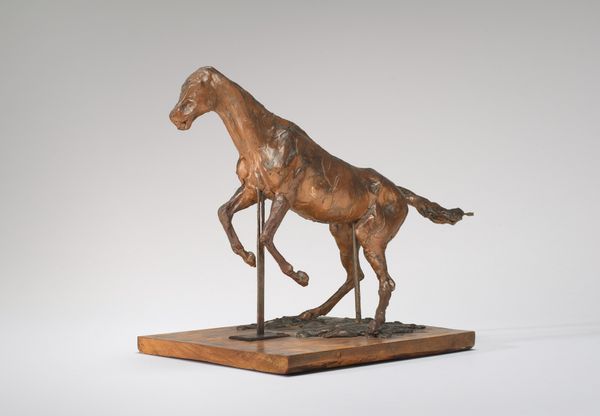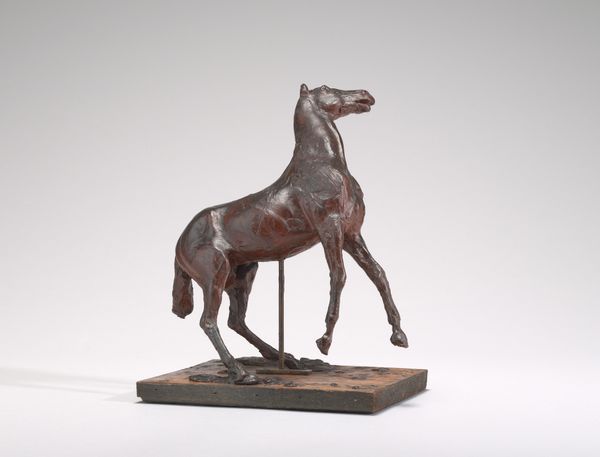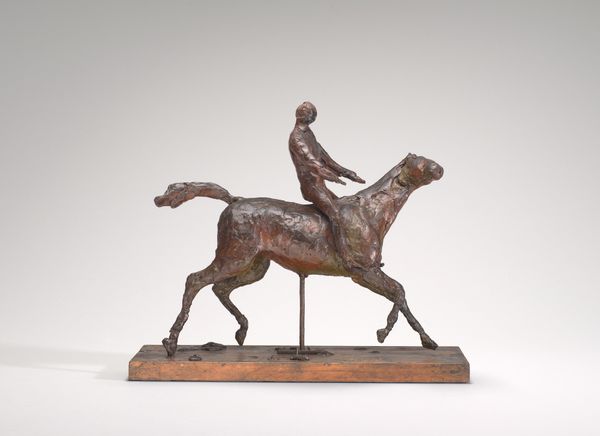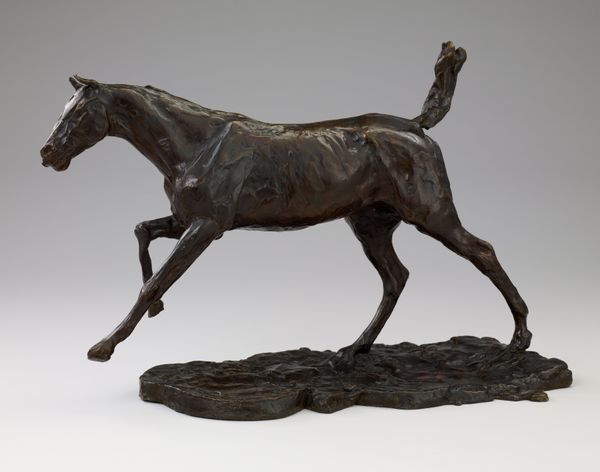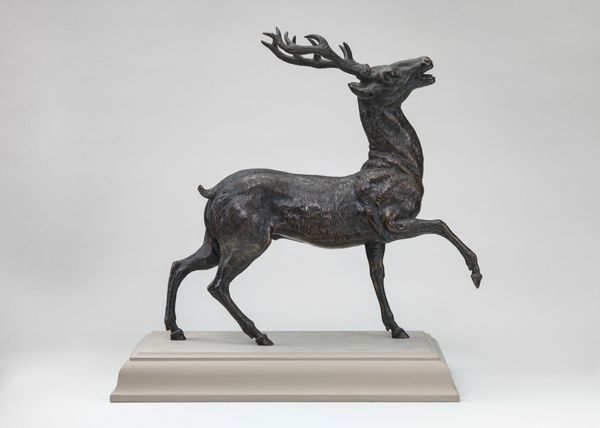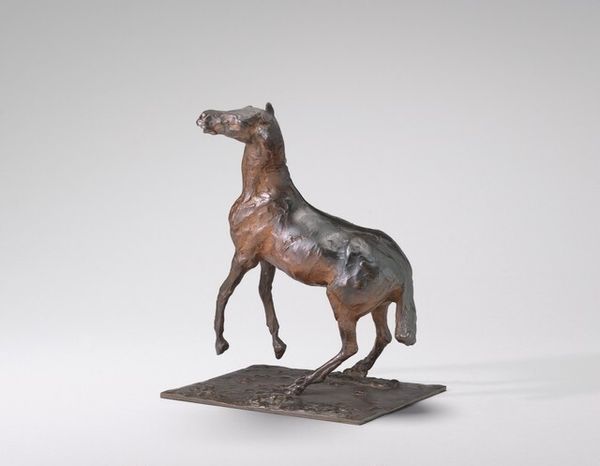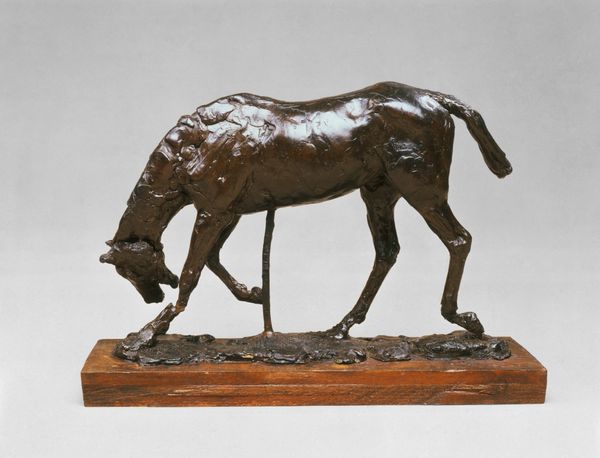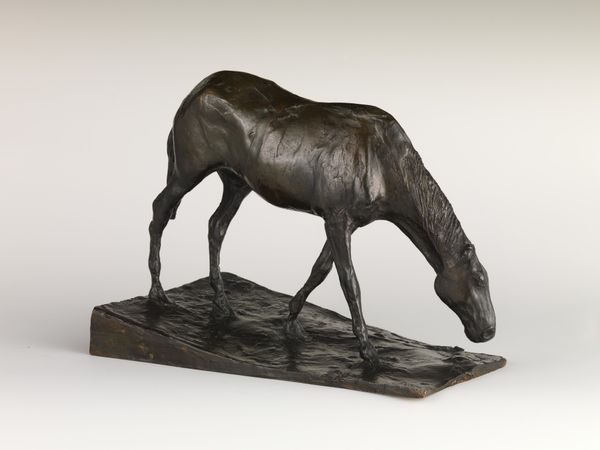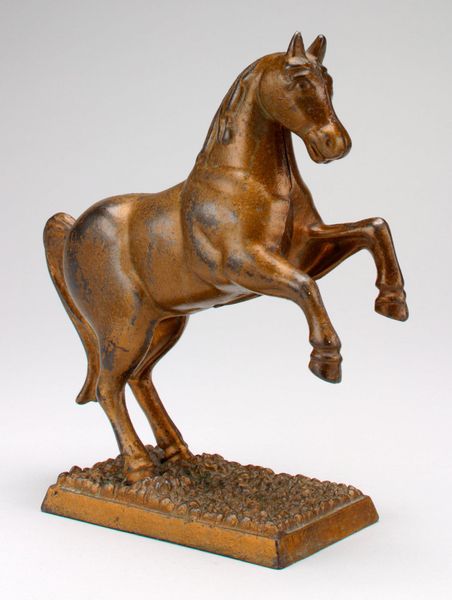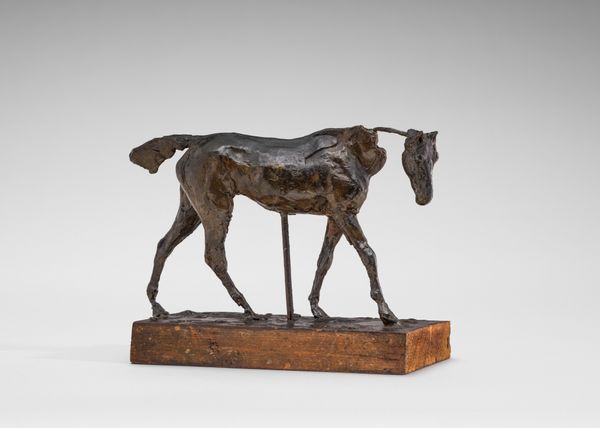
bronze, sculpture
#
animal
#
sculpture
#
bronze
#
figuration
#
sculpture
#
decorative-art
Dimensions: 12-1/8 x 10-5/16 x 7-5/8 in. (30.8 x 26.2 x 19.4 cm.)
Copyright: Public Domain
Editor: Here we have Edgar Degas' bronze sculpture, "Rearing Horse," likely created between 1875 and 1920. The surface is so tactile, almost rough, and the pose…dynamic! What are your initial thoughts? Curator: It's vital to consider the socio-economic factors and the production of this bronze. Was it cast during Degas’ lifetime, impacting his control over the labor? The date range is broad, which raises questions about workshop practices, material access, and market demands. This affects how we value its “authenticity." Editor: So, the material itself, bronze, its availability, influences our understanding? I hadn't considered that! Curator: Exactly. Bronze casting involves a complex series of labor processes – from the mold making to the finishing. Who was involved, and what were their skill levels? Each stage imparts subtle yet crucial material traces. Also, thinking about this "Rearing Horse," why horses? How does this connect to social events such as racing that rely on the animals' power and the spectacles, wagering and social competition? Editor: That adds layers to it. The horse isn’t just a horse; it represents an industry, even wealth and class. The act of crafting, from raw material to finished art, carries immense significance. Curator: Precisely. It compels us to move beyond solely appreciating its aesthetic qualities towards appreciating how socio-economic elements shape artistic expression. How does considering the labor of casting, and Degas' involvement in that labor, change your appreciation for this bronze? Editor: Immensely! It encourages questioning rather than just admiring. Thanks, I'm off to read more! Curator: Likewise! It’s all about broadening our vision.
Comments
No comments
Be the first to comment and join the conversation on the ultimate creative platform.
